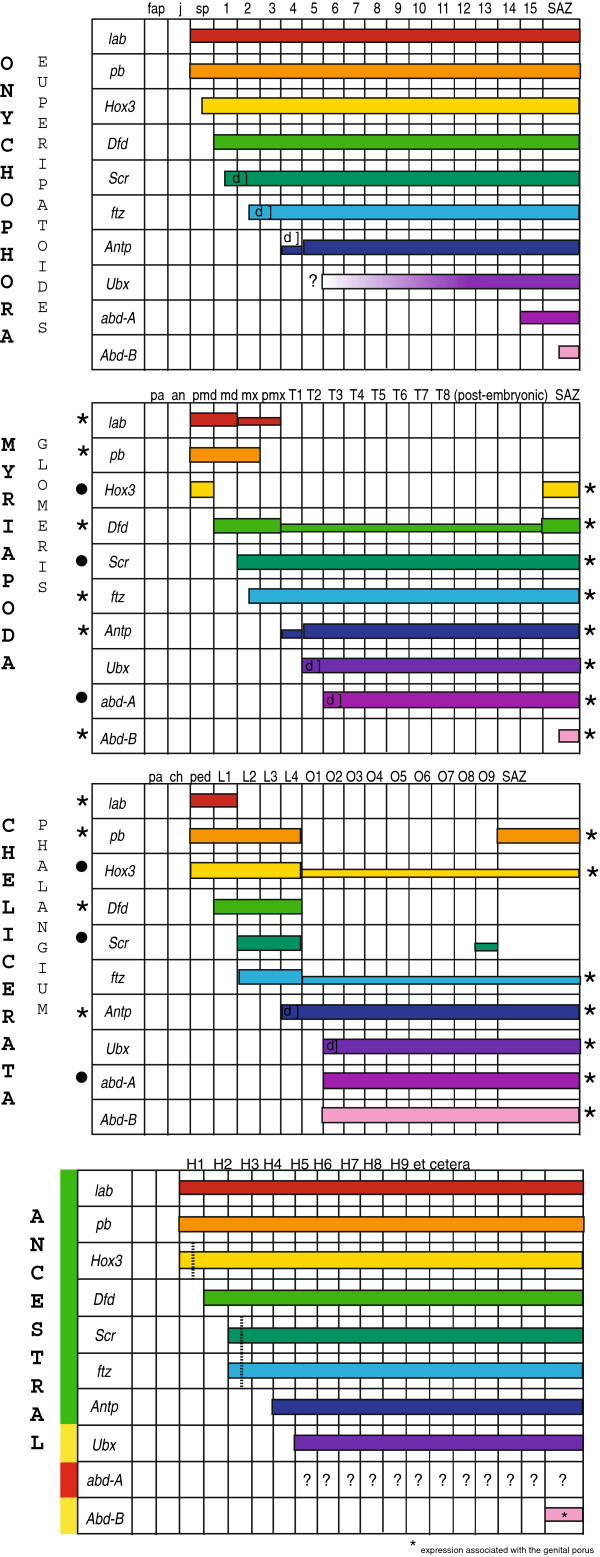Figure 5.
Comparison of Hox gene expression profiles in the onychophoran E. kanangrensis, the myriapod Glomeris marginata and the harvestman Phalangium opilio, and reconstruction of the putative Hox gene pattern in the common ancestor. Orthologous genes are with identical colours. Conserved anterior and posterior borders of expression (compared to E. kanangrensis) are marked with asterisks (*). Borders of expression that are conserved in the myriapod and the harvestman (but not the onychophoran) are marked with filled circles (•). Smaller bars indicate weaker expression. ‘Delayed’ expression is marked with ‘d]’. Green bar to the left indicates good support for the predicted corresponding expression patterns in the ancestor; yellow bars indicate ambiguous support for the reconstructed expression patterns; red bar indicates that the ancestral expression pattern of abd-A is not predictable. This is also indicated by question marks (?). Dashed vertical lines indicate an either segmental or parasegmental (dashed line) anterior expression border. Hox gene-expressing segments are labelled with the prefix ‘H’. Abbreviations are as in Figure 1, and an, antennal segment; ch, cheliceral segment; L1-L4 (in chelicerates), walking limb-bearing segments one to four; md, mandibular segment; mx, maxillary segment; O1-O9, first to ninth opisthosomal segment; pa, pre-antennal region; ped, pedipalpal segment; pmd, premandibular segment; pmx, postmaxillary segment; SAZ, segment addition zone; T1-T8, first to eighth walking limb-bearing segment.

